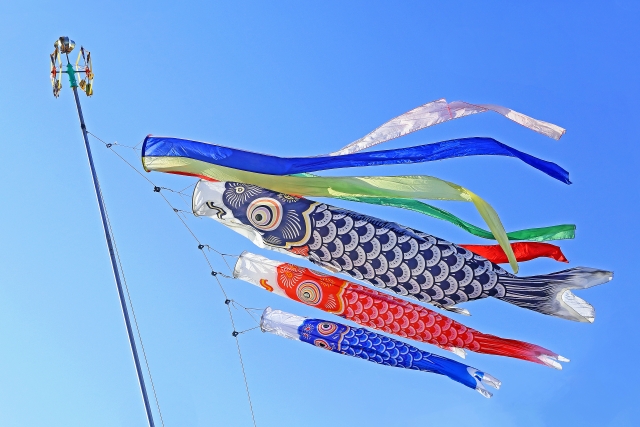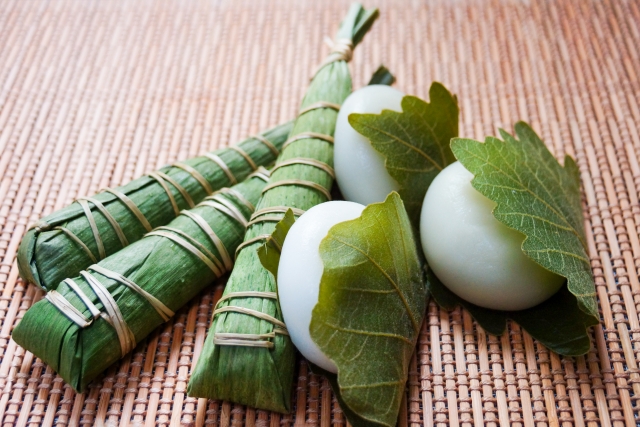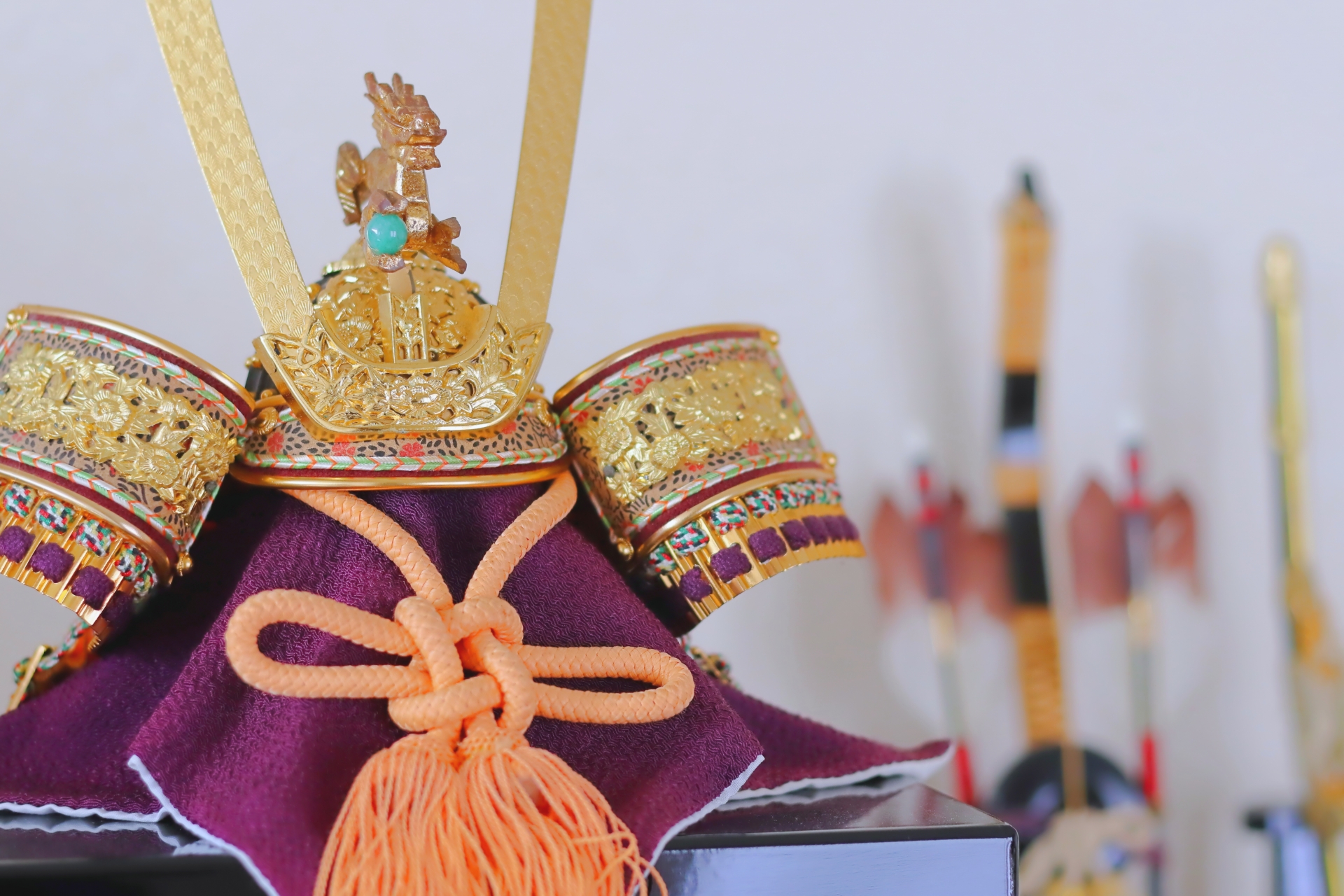5月5日は「端午の節句」。
兜や鯉のぼりを飾るのはなぜ?柏餅の意味は?
英語で説明してみましょう。
端午の節句はいつから男の子の日に?


端午の節句は日本では奈良時代から行われている古い行事です。
季節の変わり目で病気になりやすい時期のため、香りが強く邪気を払うとされてきた「菖蒲」を軒先にさしたり、冠に飾ったり、お酒に入れて飲んだりしていました。

In the Kamakura period, samurai families began celebrating May 5th as the day for boys.
鎌倉時代に、武家では5月5日を男の子の日として祝うようになりました。
Helmets and swords were presented to the boys with the wish for their growth and success.
男の子の成長や成功を祈って、兜や太刀が男の子に贈られました。


Today, families with boys display ornamental samurai armor, helmets and dolls representing famous samurai worriers and other heroes.
今日、男の子のいる家庭では、装飾用の鎧兜や有名な侍や英雄をかたどった人形を飾ります。
They hope their sons will be brave and strong like samurai.
息子が侍のように勇敢で強くなるようにと願います。
鯉のぼりは庶民発祥





Families with boys also fly carp-shaped streamers called Koinobori.
男の子のいる家族は鯉のぼりという、鯉の形をした幟を揚げます。
Carp is a symbol of strength and success because, according to Chinese legend, carp turned into a dragon when it swam up fast streams.
中国の伝説によると、鯉が急流をのぼって竜になったということから、鯉は強さと成功の象徴なのです。

ちなみに、風速5メートル以上だと鯉のぼりが上の写真のように元気よく泳ぐのよ。
柏餅と粽(ちまき)、日本発祥はどちら?




Kashiwa Mochi is a rice cake filled with sweet bean paste wrapped in an oak leaf.
柏餅は柏の葉で包まれた餡が入ったお餅です。
The oak tree symbolizes the prosperity of descendants.
柏の木は子孫繁栄を象徴しています。
Its old leaves do not fall off until new leaves sprout, which is believed to mean that parents do not die before their child is born.
柏の木の古い葉は新しい葉が芽吹くまで落ちません、つまりそれは、子供が生まれる前に親は亡くならないことを意味していると信じられているのです。

今回は端午の節句を見ていきました。それぞれの由来を知ると面白いですね。



